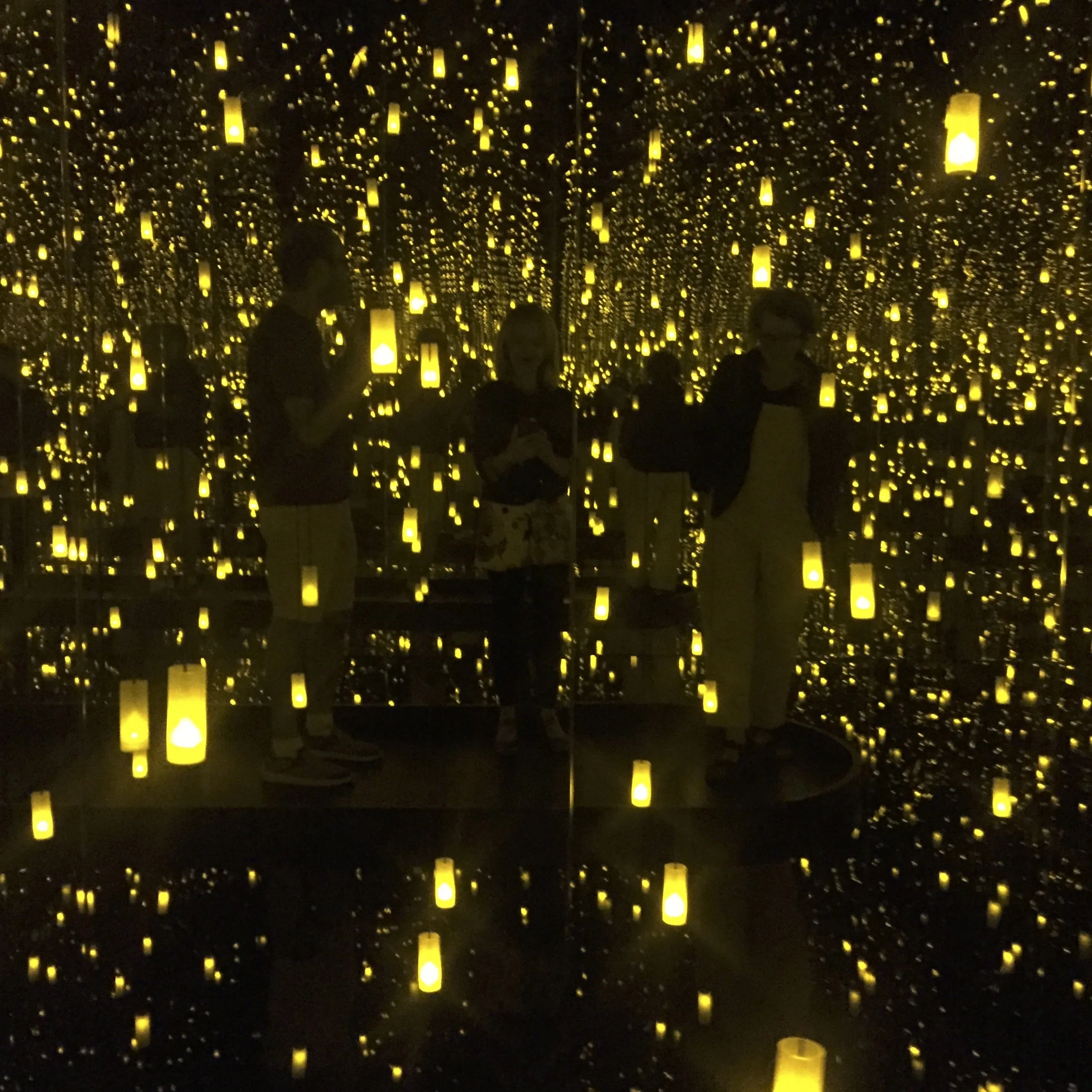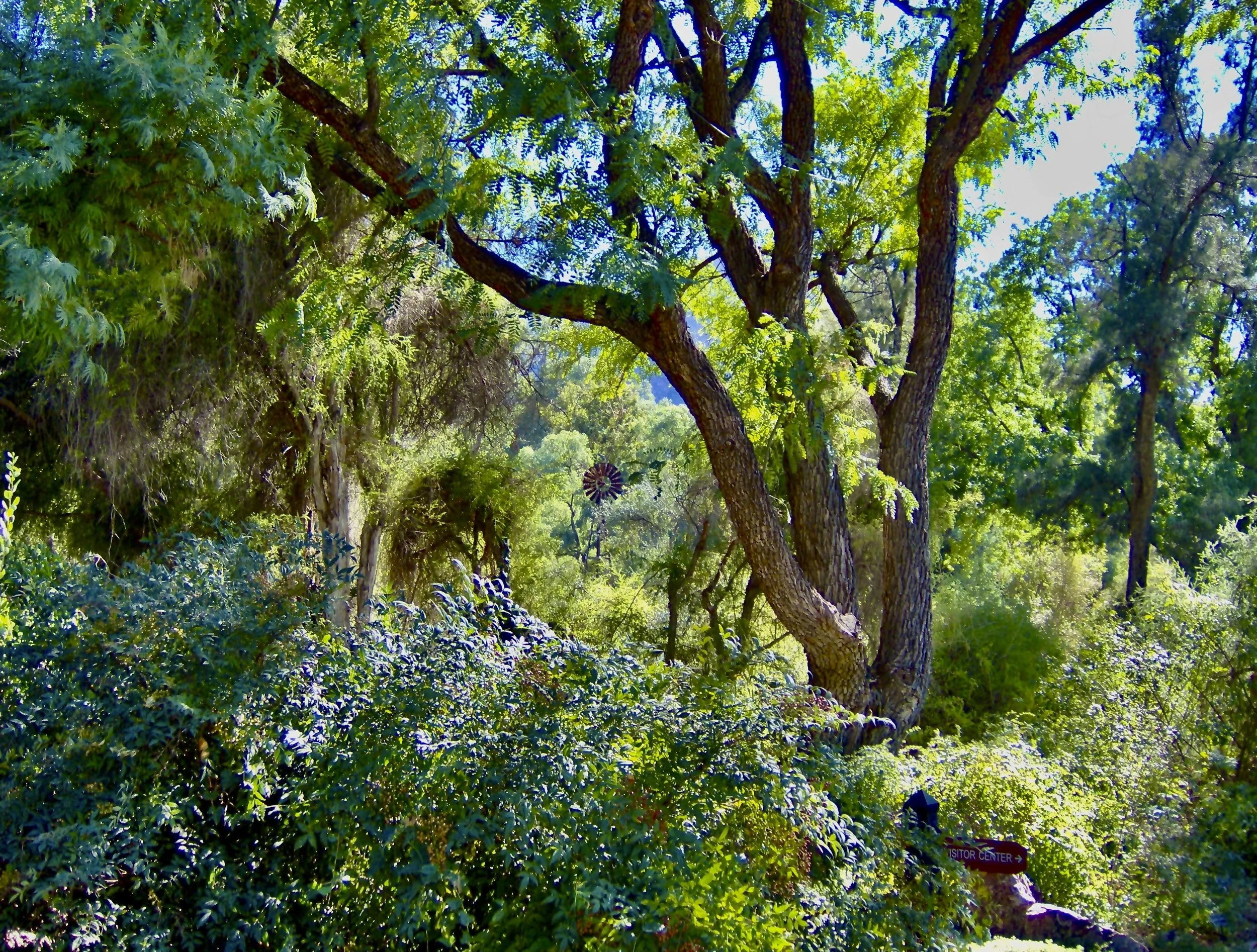Not the Second Coming—But Maybe Something Else
How a year of hypnotherapy led me to a deeper understanding of the divine
Mystical explorations inside Yayoi Kusama’s Aftermath of Obliteration of Eternity at the Seattle Art Museum in 2017.
Reading time: About 6 minutes.
The Setup
When I was in grad school at Seattle University, earning a master’s degree in transforming spirituality—a program that combined theology and psychology—we were required to work with a spiritual director.
A spiritual director is someone who helps you find the divine in your life, however you define divine.
Some people define it as God. Some define it as nature. Some define it as the mysterious force that makes socks disappear in the laundry. My own definition? Sacred potential. The essence within every living being that is inherently meaningful—something true, simply by existing. It’s not something to be worshipped—it’s something to be lived.
So, like all my classmates, I worked with a spiritual director. But I also did what I always do: I looked for more. Different perspectives. New ways of seeing.
Which is how I ended up in hypnotherapy.
The Hypnotic State
Hypnotherapy, as it turns out, starts a lot like regular therapy. You sit in a comfy chair. You talk about your life. Your hypnotherapist (in my case, a woman named Ann Marie*) guides you into a deeply relaxed state, which is basically what I hope for every time I get a massage, but with fewer hot towels.
We worked through past traumas. We unpacked present-day anxieties. Pretty standard stuff.
And then Ann Marie turned the dial to past lives.
She asked questions. Nudged me toward the idea that maybe I was carrying the spirit of someone who had lived before me.
Did I believe it? No.
Did I not believe it? Also no.
It was one of those unprovable things, like Bigfoot or the idea that “one size fits all.” I was open, but skeptical.
And then, one day, we landed on my Christian upbringing. And out of nowhere, a thought emerged:
“I was Jesus.”
Jesus Mode Activated
It wasn’t just a thought. It was a vision.
One second, I was me. The next, I was him.
I saw through his eyes. I felt his body—my body—nailed to a cross. And in an instant, the full weight of the world’s suffering crashed down on me.
First came the pain.
Fire surged through my limbs. My hands. My feet. A brutal, burning pressure—nails driven straight through. My body convulsed against it. My mind reeled.
And just before I could collapse into the agony of it, I saw.
Children with ribs pressing against paper-thin skin. Mothers crying out in childbirth, their breath stolen before they could hold their babies. War. Famine. Bodies crumpled in the dirt, eyes empty, hands reaching toward nothing.
My throat clenched. My breath hitched. And then—I sobbed.
Full-body, gut-wrenching, uncontrollable grief. Like something ancient inside me had been cracked open.
Even now, more than a decade later, if I let myself return to that moment, I can still feel it—the ache in my palms, the weight pressing down.
And, just when I thought the vision was over—
Another shift.
The Cosmic Perspective
I was no longer Jesus. I was no longer human.
I was everywhere.
I saw everything—not just the world, but existence itself. Galaxies spinning, stars birthing and dying, planets careening through space, their surfaces both teeming with life and completely desolate. I zoomed in, past oceans, past cities, past people, past the microscopic until even the smallest particles felt infinite.
And then—
Nothing.
A vast, endless void. No time. No direction. Just pure, dizzying existence.
It was overwhelming. I wasn’t sure if I was witnessing creation or destruction. If I was seeing everything at once or nothing at all.
For a brief, wild moment, I thought:
Maybe Ann Marie is right.
Maybe I really am Jesus.
The Messiah Complex
Ann Marie was thrilled.
“We should write a book,” she said. “We might even get on Oprah.”
I sat there, still vibrating from the experience, while she started planning our media tour.
And something in me snapped awake.
The more she talked, the less I believed I was Jesus. Not because the experience wasn’t real, but because I recognized what was happening.
I had been raised in Christianity. Taught to be aware of suffering, to help the most vulnerable. My education had only reinforced that—compassion, service, action. It wasn’t that I had been Jesus. It was that I had absorbed his teachings so deeply that my subconscious used them to empathize with the world’s pain.
At the time, I was studying Teresa of Ávila, the 16th-century mystic. And suddenly, her words clicked into place:
Christ has no body but yours,
No hands, no feet on earth but yours.
Yours are the eyes with which he looks
Compassion on this world…
Maybe I wasn’t Jesus.
Maybe no one is.
Or maybe we all are.
The Breakup
Ann Marie didn’t like that version.
She wanted me to be the second coming. She wanted herself to be someone important too—an apostle, Mary Magdalene, someone with a place in the story.
Not long after that, we parted ways.
Hypnotherapy had been useful. But it had also become too much. Too much suggestion. Too much projection. Too much of someone else’s interpretation shaping my experience.
What I Know Now
These days, I no longer practice a religion. But that doesn’t mean I’ve let go of everything I once believed.
If anything, my belief has distilled into something simpler:
This life—the one I know I have—is the one that matters. It’s the only one I have control over. It’s my opportunity to leave the world better than I found it.
It doesn’t matter what religion you follow. Or if you follow one. Or if you believe in past lives, a saintly heaven, or nothing at all.
What matters is how we live.
The strongest among us should help the most vulnerable. Those with resources should share with those who have less. Those whose lives shine in the light of a thousand suns—whether by birth or by effort—should extend that warmth to others.
That doesn’t mean martyrdom. It doesn’t mean giving up joy or comfort. It just means seeing others as valuable.
It starts by seeing yourself as valuable, too.
Jesus said, “Love your neighbor as yourself.”
That means: Love yourself. See your inherent worth. But also, know your limits. We all have them. Honor your boundaries. Then, give what you can—without giving yourself away.
Once you can clearly see your own yard, turn to your neighbor and offer them the same grace. Recognize their humanity—their strengths and their struggles. Respect their boundaries as you respect your own. Give what you can, receive what you need, and let that be enough.
Maybe I wasn’t Jesus.
Maybe no one is.
Or maybe we all are—not as saviors, but as hands and feet, as hearts capable of kindness, as people who, in whatever small ways we can, bring light into the world.
*Anne Marie is not her real name.




